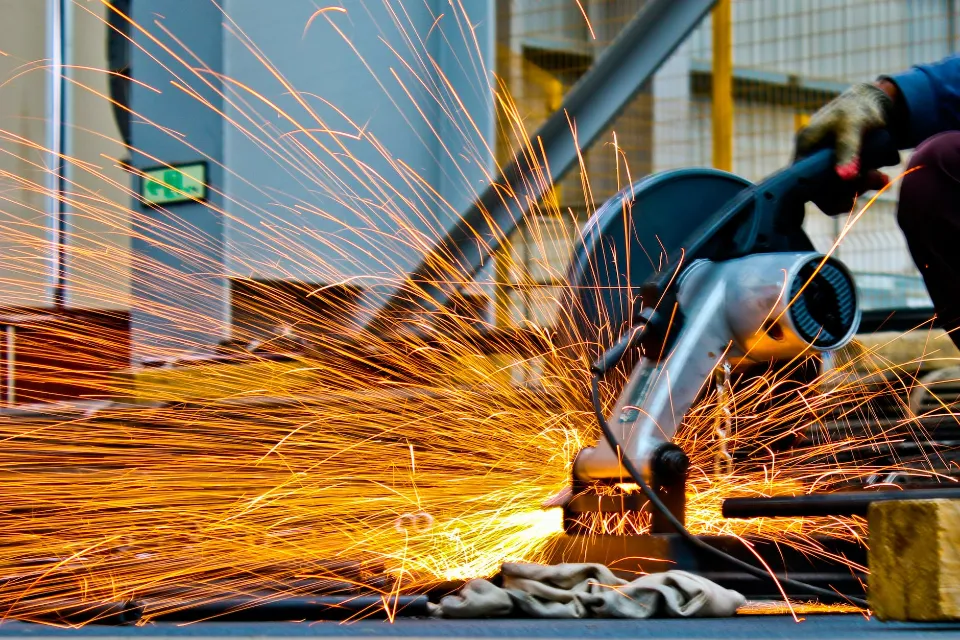
A type of switch usually in the form of a push button that is only engaged while it is being depressed, as opposed to a typical “on/off” switch, which latches in its set position. Momentary switches can be either normally open or normally closed. How does momentary switch work? Where the momentary switch is used? What are the differences between a momentary switch with other switches? Continue reading, and you will learn it.
Table of Contents
What is a Momentary Action Switch?
An electronics category is a momentary action switch. It describes the kind of contact used in an electronic switch or the command used to cause an electric charge to be generated. As the name implies, momentary action switches are briefly activated by applied force and revert to their default state when the force is removed.
How Does a Momentary Switch Work?
Momentary switches are created to function similarly to regular switches in order to assist in bridging two metal contacts to complete an electrical circuit. However, the main distinction between them and a conventional switch is that a momentary switch typically needs to be pressed in order to change its state as opposed to a conventional light switch or an equivalent switch, which requires a flicking motion. When the “push-to-make” type of momentary switch is pressed, it will connect the metal contacts of the switch when pressed. The contacts will be released once the button has been released. However, to disconnect and then reconnect the connected electrical circuit, a push-to-break momentary switch must be depressed.
What Are the Applications of Momentary Switches?
Momentary switches are used in many different situations throughout daily life. A button in an elevator, for instance, is a push-to-break momentary switch that holds the electromagnetic door open until it is pressed. A keyboard’s push-to-make momentary switches, which are another typical example, are the keys. The electrical circuit associated with a key is finished when it is pressed. Doorbells, burglar alarms, and laser pointers are additional instances of momentary switches.
What is the Function of Momentary Switches?
By applying and then removing force, momentary action switches enable and disable a process. The circuit becomes closed when a force is applied, and it becomes open again when that same force is removed. Examples that are frequently encountered include doorbells, car horns, and laser pointers.
What Are the Features of Momentary Switches?
Momentary action switches typically have buttons as their triggers, but they can also be operated by keys, slides, or toggles. By using a light or sound, switches can be made to signal this fleeting action.
What Are the Advantages of Momentary Switches?
Momentary switches have a number of benefits that make them preferable to a conventional on/off switch. One example of this is the requirement for user-driven activation or deactivation of an electronic device or system design. The momentary switch can be used to produce a transient effect that enables the system to recognize the end user’s input. The user can then toggle the switch while holding it in their hand. A laser pointer, as an illustration, can only be used when the user activates it by pressing the button on it in order to highlight a specific object or presentation. When the intended result is obtained, the user presses the button, which causes the device to shut off.

What Are the Alternatives to the Momentary Switch?
Momentary switches are one of many switch types used in industry, despite the fact that they are very helpful in a variety of applications. Rotating, toggle, special, mercury, knife, and foot switch types are some of the typical substitutes. All switch types follow similar operating principles, and each has pros and cons that should be taken into account before using the switch type.
What is the Difference Between Latching and Momentary Switches?
Momentary switches are better suited for some applications than latching switches because of how they operate differently. How do latching and momentary switches differ from one another?
The distinction between these two switch configurations is discussed below. Many of our switches are available in both latching and momentary configurations.
Latching Switches
When a latching switch is activated, it stays on until it is deactivated by the user. They do not demand that the user continuously compress.
Home appliances like light switches, thermostats for the heating system, and stereos all use latching switches.
For tattoo machines and spa operations, different industries use our latching switches.
Momentary Switches
Switches that only last a moment need constant compression. When the user applies pressure to the switch, it will turn on and stay lit only for the duration of that pressure. Upon release of pressure, they will turn off. Using an electric drill or a door buzzer as examples.
The hand or foot control for hospital beds uses our momentary switches in the medical sector. The patient can move the bed into the desired position, but in order for the bed to move, they need to keep their finger on the button.
We also provide momentary switches for “press to talk” applications. The switch is used by telephone operators to answer the phone, and the line will stay open as long as the switch is depressed.
What Are the Differences Between Momentary and Alternate Switches?
Operation switches can be operated in two ways: momentarily and alternately (this time, a push-type switch is described). The descriptions that follow now go into more detail about each operation method.
Momentary operation
Let’s start by outlining the temporary operation.
The momentary operation method, also known as the self-reset type, is illustrated in Figure 1. It maintains a switch’s ON state only while the button is pressed and held, and the switch reverts to its OFF state when the button is released. It is indicated as “Momentary type” in English, where “Momentary” means lasting for a moment.
Let’s look at the crane game machines found in amusement parks as an example of how to use this type of momentary operation switch in a way that is both familiar to you and simple to understand. In order to move and position the crane, a momentary switch is used for the machine’s button.
Such momentary-type switches are used in other applications, such as buzzers for bus exits. These buzzer buttons only need to be pushed once to perform a single action.
Alternate operation
Next, Figure 2 shows the alternative operation method. One press of the button on a switch of this type turns it ON, and it stays in the ON position even after the button is released. Self-holding type is the name given to this method of operation. It is indicated as “Alternate type” in English, where “Alternate” means “by turns.”
Switches of the alternate operation type include a type that can be pressed repeatedly to return to the previous state and a type that can return to the previous state by turning its lever in the opposite direction. (For this application, a toggle switch is utilized, as shown in Figure 3.) For your information, the first kind is also known as the push-ON and push-OFF types.
An example of a switch with an alternate mode of operation is the main power switch found on TVs and stereos as well as the push-button power switch found on flashlights. This alternative approach is frequently used for applications that use the same button to control an item’s ON and OFF states.
Toggle switch

Below is a brief explanation of the toggle switch in Figure 3 that was previously mentioned.
When a toggle switch’s knob is depressed, it acts like a lever to switch equipment. In addition to the toggle switches that were previously described, Panasonic also offers alternate and momentary type toggle switches.
Panasonic refers to toggle switches using the momentary method as the “recoil” type. Such a switch’s lever maintains its pushed-down position while being pressed and held, and when the lever is released, the force of the switch’s internal spring forces the lever to rise to its upright position. Therefore, they are indicated as the “recoil” type.
The toggle switch operation techniques are listed in Table 1 for convenience. The switch is in its ON state when its lever is in the temporary operation position, as indicated by the description of “ON” in the table.
Considering that switches No. 5 and The explanations for No. 6 are a little complicated.
When the lever of Switch No. 5 is pushed down to the left or right, the switch is turned ON; when it is upright (in the middle of the figure), the switch is turned OFF. The left and right sides of the diagram demonstrate how the switch is turned ON using a momentary operation technique, in which the lever is pulled down and then released, causing it to return to its upright position.
The lever of switch No. 6, which operates similarly to switch No. 5, is activated by depressing it to the left or right. 5. The only difference is that one pair of contacts operates using the momentary operation method, while the other pair uses the alternate operation method. As an illustration of the use of such a switch, consider the button on a food processor. Such a product can be controlled by the switch by allowing rotation while the button is pressed and held, or the rotation can continue even if the button is released after being pressed just once.
Why Choose Latching Or Momentary?
Which switch type is most appropriate will depend on the application at hand.
Operator safety will be one of the primary factors in the decision to use a momentary switch. It is safer for an operator to compress the switch if it is unsafe to leave the device on, preventing it from being used unattended. Heavy-duty roller doors use momentary switches, which the operator must depress when the door is opening or closing. If there are any obstructions in the doorway, the operator can quickly stop the door from closing and prevent an accident.
It would be extremely inconvenient for the operator to have to manually apply pressure to keep the switch on, so latching switches are used in lower-risk applications. A latching switch is far more appropriate because it would be highly inappropriate to have to stand at a light switch to keep it turned on.
Conclusion
When an end user presses a momentary switch, it can turn any electronic device on or off. The traditional on/off switch is an alternative. This type of switch can actually represent one of two types. They are common in all kinds of electronic devices and typically take the shape of a button to help trigger a device’s state change.



